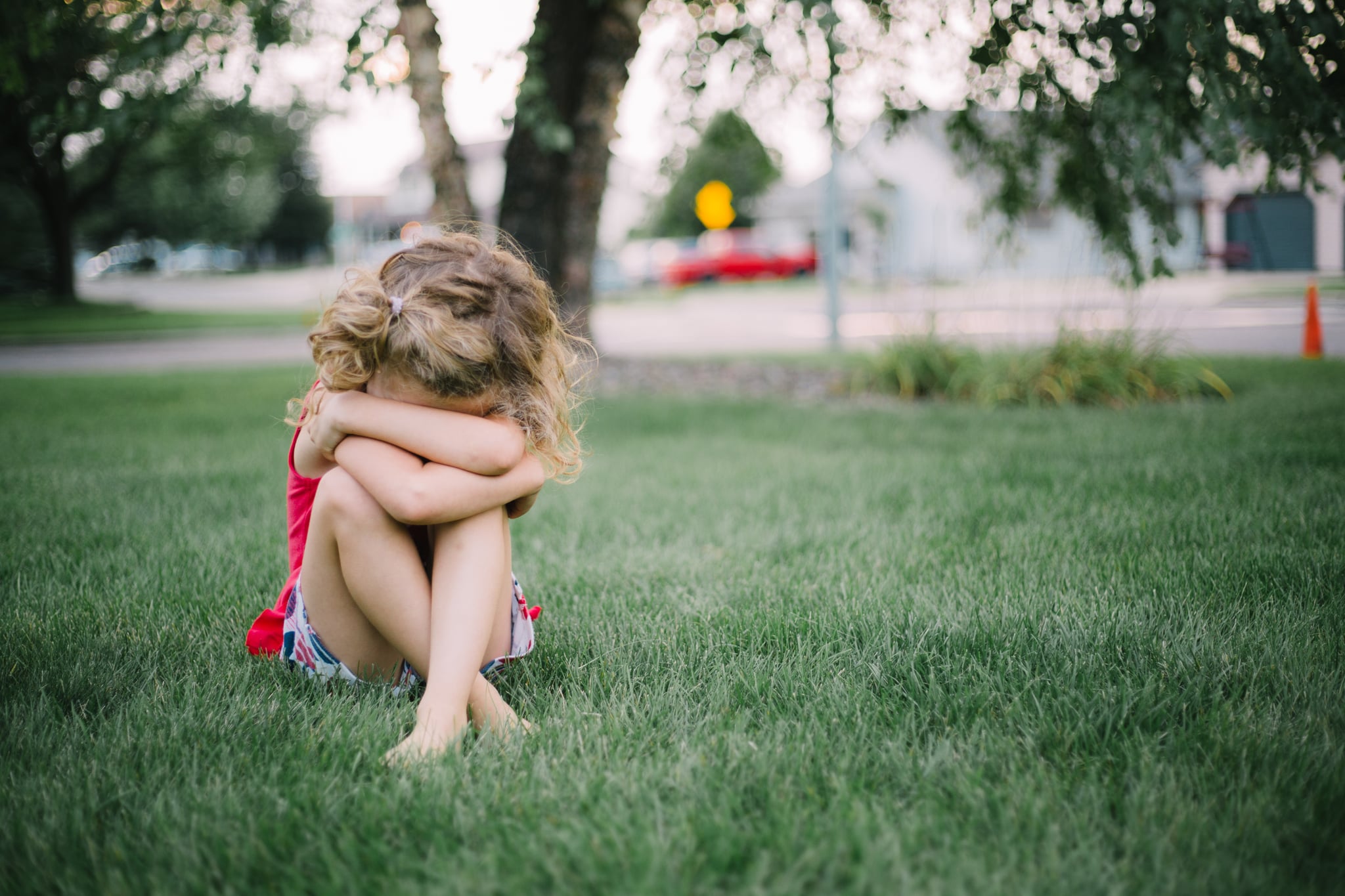
It’s back-to-school time, and as we shuffle back into our daily routines, it can be a challenging adjustment for the whole family. But if you notice your child becomes a big ball of emotions once the school day ends — they’re yelling, having meltdowns, or struggling with tantrums — that’s not uncommon. And it has a name: after-school restraint collapse.
The term after-school restraint collapse was coined by parenting educator and counselor Andrea Loewen Nair, a counselor from London, Ontario, Canada. The term is sometimes called “after-school tantrum” or “after-school meltdown,” which describes a situation where a child — typically in the elementary grades — exhibits emotional and behavioral challenges, such as irritability, tantrums, emotional outbursts, or meltdowns after finishing a day at school.
Dealing with after-school restraint collapse can be pretty overwhelming and tough to handle — for kids and parents. POPSUGAR spoke to experts to find out exactly what after-school restraint collapse is and how to support our kids and ourselves through the transitions.
What Is After-School Restraint Collapse?
“After-school restraint collapse is a known phenomenon that can affect many school-age children,” Jill DiPietro, LCSW, owner and therapist at Foundations, specializing in the mental health treatment of children with anxiety and attention deficit hyperactivity disorder (ADHD), tells POPSUGAR.
According to DiPietro, after-school restraint collapse is a “combination of holding it all together at school with the stress of academics, social pressures, and fatigue.” She shares: “Their child will have a seemingly good day at school, come home and immediately become dysregulated. Some children experience crying, tantrums, screaming, aggression, or other concerning behaviors.”
DiPietro notes that many kids who struggle with restraint collapse after school are well-behaved during school hours. However, their mood shifts when they get home because “their parents are the safest, most secure place for them” to release stress and fatigue.
Do All Kids Exhibit After-School Restraint Collapse?
All kids, even teenagers, can experience after-school restraint collapse, but DiPietro notes that some are more susceptible to it than others, including those diagnosed with ADHD and autism. “Neurodiverse children may exhibit masking at school or try to fit into typical expectations, that their systems are overwhelmed when they get home,” she shares.
Reena B. Patel, a parenting expert, positive psychologist, and licensed educational board-certified behavior analyst, tells POPSUGAR that after-school restraint collapse may present differently depending on your child’s age.
They may release their emotions through “screaming, crying, whining, disrespectful behavior, [or] anger,” she explains. For older kids or teenagers, their after-school restraint collapse might look like they’re “overly emotional [or] easily upset,” or it can manifest as “refusing to do homework or chores or picking fights with siblings or parents.”
How to Deal With After-School Restraint Collapse
For parents who find it challenging to deal with their child’s emotional outbursts after school, Patel suggests a few quick and simple techniques to help foster a calm and supportive environment after school:
- Create neutral ground and manage expectations.
- Have consistent and planned downtime.
- Increase unstructured play time.
- Let your child get it out in a safe way.
- Do not take it personally.
“Children at the height of a meltdown cannot be reasoned with,” DiPietro adds. “When parents attempt to reason or converse with a child experiencing significant emotional dysregulation, they are more likely to keep a child in that negative feedback loop.”
Instead, DiPietro says, “the best thing parents can do” to help keep a calm environment at home is to remain calm and to present your child with “support to meet their needs, such as providing a snack.”
How to Prevent After-School Restraint Collapse
Alanna Gallo, a mom of four, parenting expert, and former teacher with a master of arts degree in education, tells POPSUGAR that parents can help stop an after-school restraint collapse before it starts. She suggests “allowing children ample time after school to decompress, spend time in nature, listen to music, read, and do things that truly allow the brain and body to regulate alongside an emotionally regulated adult.”
It’s important that you’re mindful of what you have planned at home after school. “Don’t overschedule after-school activities,” Gallo notes. She also suggests parents look critically at their child’s learning environment if other mitigating steps haven’t worked. “If your child is experiencing this level of restraint collapse, the learning environment might not be a good fit,” explains. “There are many alternative schooling options available to families beyond traditional school.”
And, where possible, keep a routine so kids know what to expect, DiPietro says. “Most children find comfort in knowing the expectations. Creating a daily routine, even a visual one for younger children, can help them understand the after-school expectations,” she adds. “Routines can help reduce a child’s stress and anxiety during this peak transition time.”
When to Seek Help About After-School Restraint Collapse
“If behaviors affect day-to-day routine, withdrawal, anxiety that can not be addressed with coping skills, feelings or thoughts that are extreme towards self, seek a primary care physician or therapist,” Patel notes.
DiPietro also cautions that if your child exhibits more harmful behaviors, such as aggression or hurting themself and others, during after-school restraint collapse episodes, a child therapist should be called for additional support.

